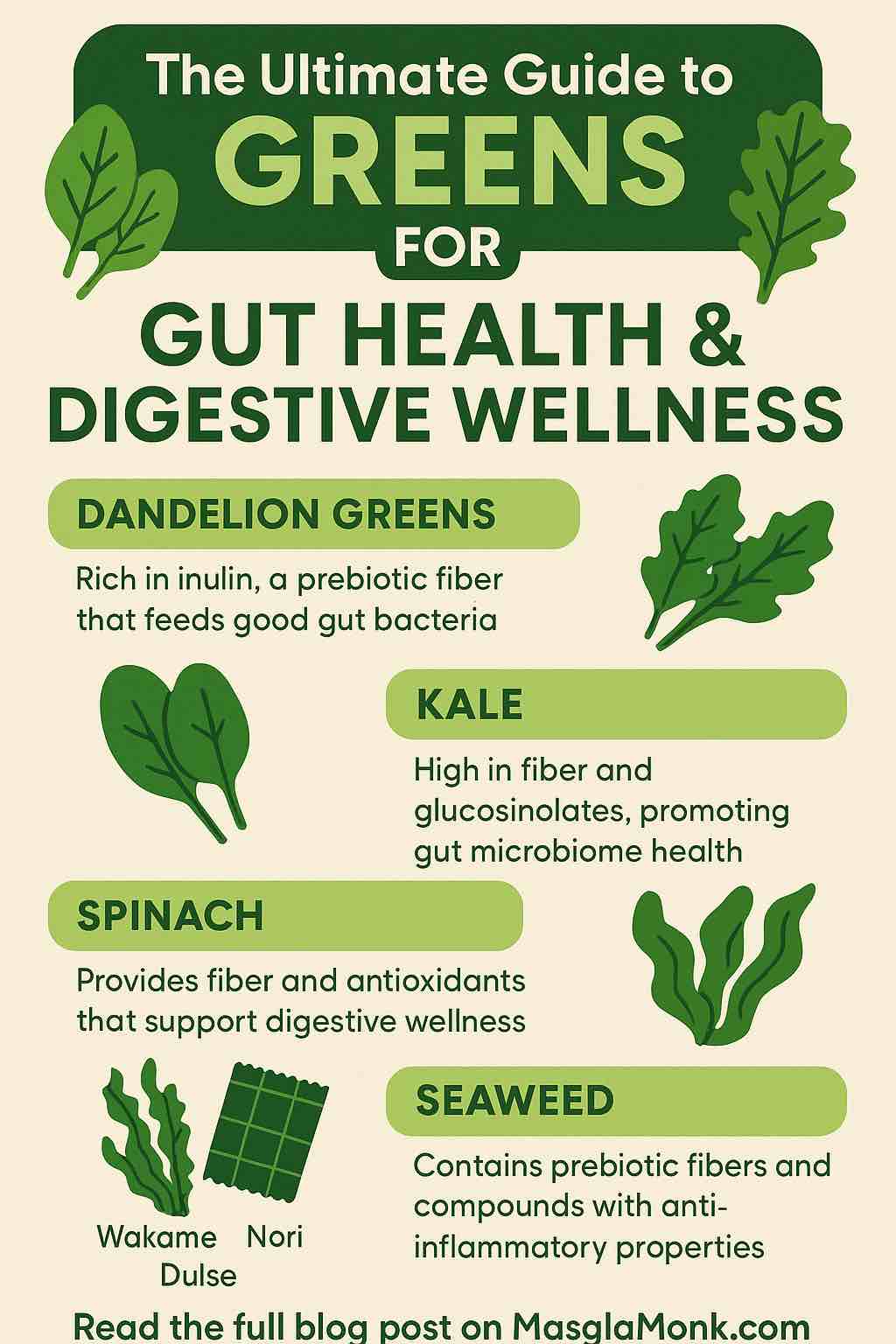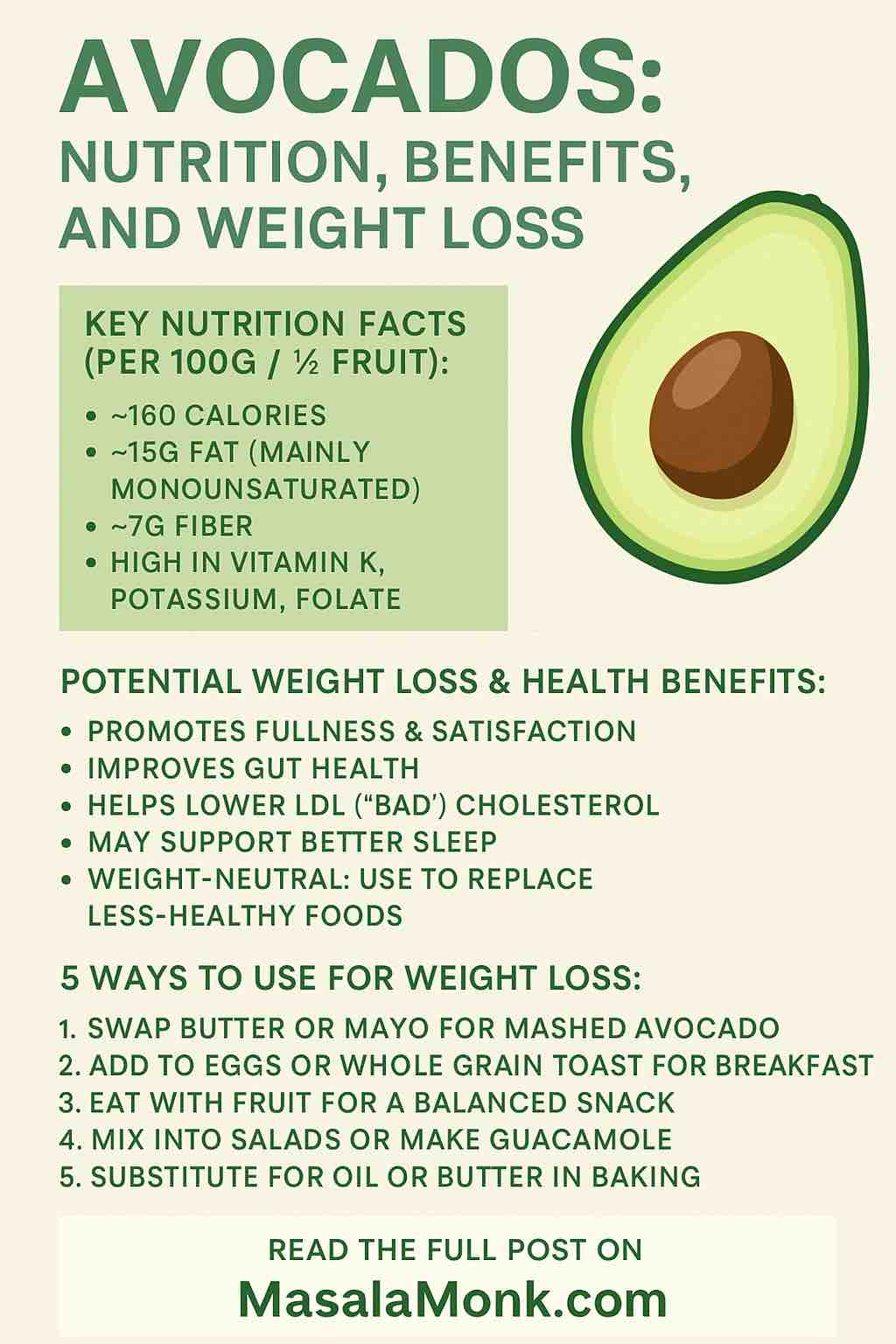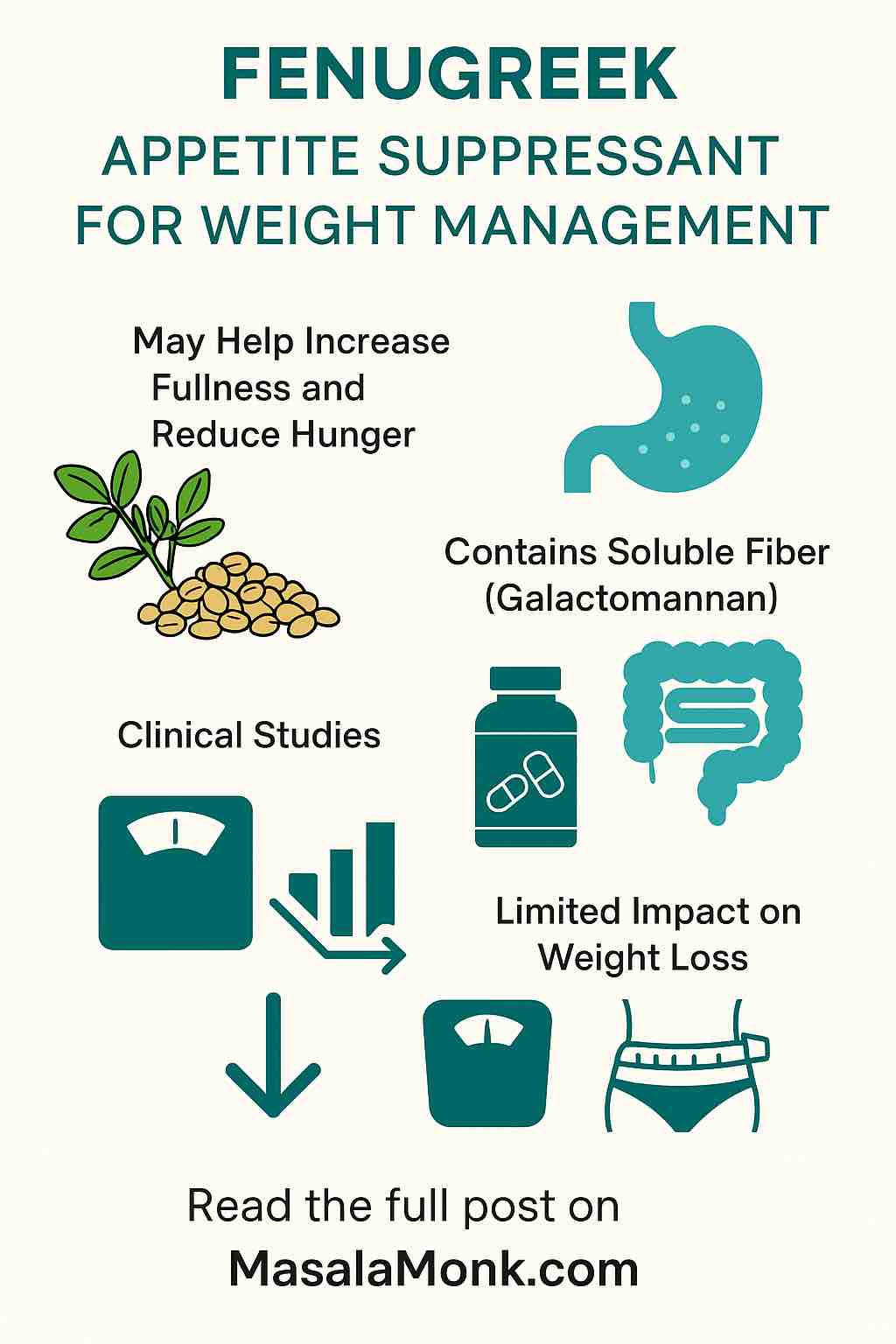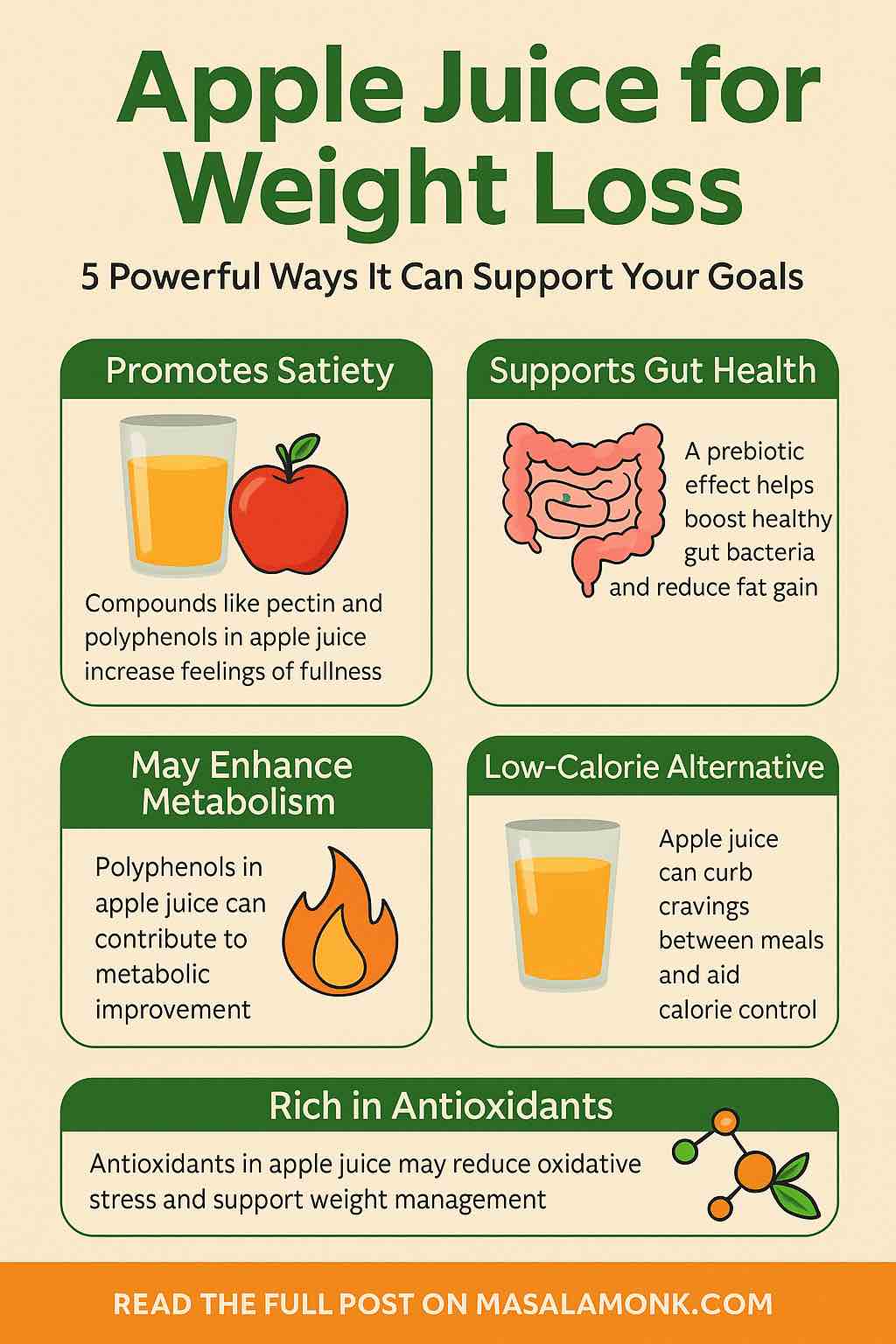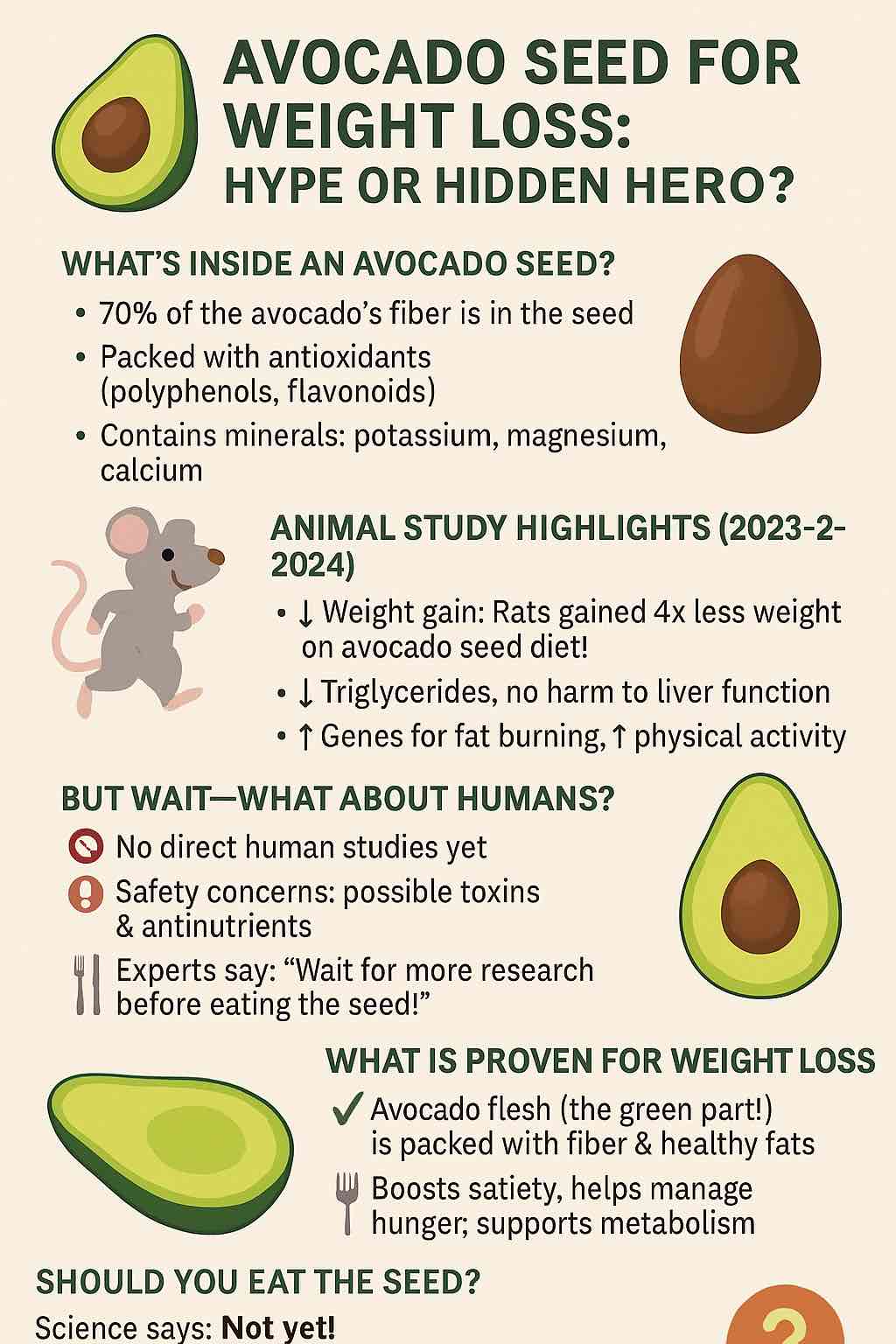
Avocado has earned its place as a superfood, beloved for its creamy texture and heart-healthy fats. But while most of us scoop out the green goodness and toss the large, hard pit, a question lingers: Are we discarding a hidden weapon for weight loss? Recent buzz and emerging research hint that the avocado seed—the part we usually throw away—might have untapped potential. But does science support the hype? Can it help you shed pounds? Let’s dig deep and separate fact from fad.
The Science So Far: What’s in an Avocado Seed?
Before tossing that seed in the blender, it’s worth understanding what’s inside. Unlike the smooth flesh, the avocado seed is dense and tough, but it’s packed with nutrients:
- Dietary Fiber: Almost 70% of an avocado’s total fiber is in the seed, which can promote feelings of fullness and steady blood sugar.
- Phytochemicals: Rich in polyphenols, flavonoids, catechins, and proanthocyanidins—compounds that have antioxidant and anti-inflammatory effects.
- Healthy Fats & Amino Acids: Contains small amounts of healthy lipids and essential amino acids.
- Minerals: Potassium, magnesium, and calcium.
It sounds impressive—but does this nutritional profile actually translate to weight-loss benefits?
What Does the Research Say? A Look at the Evidence
1. Animal Studies: Signs of Real Potential
Most of the recent excitement comes from animal research. Here’s what scientists have found:
- Weight Gain Prevention in Rats (2024): In a well-controlled study, rats fed a high-fat diet with added avocado seed powder gained much less weight (7.8 g) compared to those on a high-fat diet alone (33.9 g). They also had lower triglycerides, pointing to better fat metabolism. The effect was seen over several weeks, with no harm to liver function or cholesterol profiles.
- Metabolic Benefits in Mice (2023): Mice that consumed a small percentage of avocado seed in their diet ate less (likely feeling fuller), moved more, and activated genes linked to fat burning. These mice didn’t just gain less weight—they also seemed healthier overall, with less inflammation and no organ toxicity.
Takeaway: In rodents, avocado seed appears to reduce weight gain, curb appetite, and boost metabolism—all very promising for future human applications.
2. Human Studies: A Glaring Gap
Here’s where the plot thickens: There are no clinical trials on whole avocado seed for weight loss in humans. All human research so far has focused on the avocado flesh or isolated seed extracts in test tubes. Nutrition experts caution that while animal results are exciting, they don’t always translate directly to people.
Why? Humans digest foods differently. Compounds safe for rats may be irritating or toxic to us, especially in concentrated forms.
How Does Avocado Seed Work? Theorized Mechanisms
The ways in which avocado seed might help with weight management (at least in animal models) include:
- Appetite Regulation: High fiber and unique compounds may slow digestion and promote feelings of fullness.
- Energy Expenditure: Certain phytochemicals seem to activate genes involved in burning calories rather than storing them.
- Reduced Fat Absorption: Some evidence suggests the seed’s tannins and saponins could limit how much fat the body absorbs from food.
- Anti-inflammatory Action: Lower inflammation is often linked to improved metabolism and easier weight loss.
The Safety Question: Is It Smart to Eat Avocado Seed?
Here’s the practical reality: Avocado seed isn’t generally recognized as safe for routine human consumption.
- Antinutrients: Seeds are naturally high in tannins and compounds that block the absorption of certain minerals.
- Cyanogenic Glycosides: Like apple seeds, avocado seeds may contain compounds that release tiny amounts of cyanide when metabolized (though in much lower levels).
- Unknown Dosage: No one knows how much is safe, and extraction/concentration can make things riskier.
Leading health organizations and major nutritionists advise waiting for more evidence before adding avocado seed powder or extracts to your smoothies, especially if you’re pregnant, breastfeeding, or have digestive issues.
Practical Tips: What You Can Do For Weight Loss with Avocado
While we wait for human studies to catch up, here are some practical, science-backed ways to harness avocado for weight management:
1. Enjoy the Flesh, Not the Pit
Avocado flesh is loaded with fiber and healthy fats. Studies in humans have shown that eating an avocado with a meal increases satiety (fullness), helping you eat less later in the day.
2. Add Avocado to Breakfast
Including avocado in your breakfast (on whole-grain toast or in a smoothie) can keep hunger at bay and prevent mid-morning snack cravings.
3. Use Avocado for Healthy Swaps
Mash avocado as a substitute for butter or mayonnaise. This not only cuts calories but also increases fiber and healthy fat intake.
4. Experiment Cautiously with the Seed
If you’re curious, some people dry, grate, and blend small amounts (¼–½ tsp) of the seed into smoothies. If you choose to try this, do so very sparingly and monitor for any digestive discomfort. Always consult with a healthcare professional first.
The Bottom Line: Hype or Hidden Gem?
- Avocado seed is a fascinating subject in weight-loss research, with strong evidence for metabolic benefits in animals—but the jury is still out for humans.
- Safety concerns remain about routine consumption, so best to wait for clinical studies before jumping on the trend.
- Avocado flesh is the real, proven hero: rich in fiber and healthy fats that help control appetite, keep you fuller longer, and support a healthy metabolism.
If you’re looking for a natural edge in your weight-loss journey, enjoy the avocado—and let science work on the seed for now.
Want More? Practical Avocado Recipes for Weight Loss
1. Green Avocado Smoothie
- ½ ripe avocado
- 1 cup spinach
- 1 small apple
- 1 cup unsweetened almond milk
- Ice and a squeeze of lemon
2. Avocado & Chickpea Salad
- 1 avocado, cubed
- ½ cup cooked chickpeas
- Cherry tomatoes, red onion, lemon juice, herbs
3. Avocado Egg Toast
- ½ avocado mashed on whole-grain toast
- Topped with a poached egg, chili flakes, and arugula
FAQs
1. Can I eat avocado seeds to lose weight?
There is no clinical evidence in humans that eating avocado seeds will help with weight loss. Most studies showing benefits are in animals. Safety for regular human consumption is unproven, so it’s not recommended at this time.
2. Are there any proven weight-loss benefits of avocado seeds in humans?
No, all current research on weight loss and avocado seeds has been done on animals. No direct human studies exist to support these claims.
3. Is it safe to consume avocado seeds?
Avocado seeds contain antinutrients and possible toxins. There’s no established safe dose for humans, and health experts recommend avoiding regular consumption until more is known.
4. What nutrients are found in avocado seeds?
Avocado seeds are rich in dietary fiber, antioxidants (polyphenols, flavonoids), small amounts of healthy fats, amino acids, and minerals like potassium and magnesium.
5. How do researchers think avocado seeds might help with weight management?
Animal studies suggest they may reduce appetite, boost metabolism, and decrease fat accumulation, likely due to their high fiber and bioactive compound content.
6. How can I prepare an avocado seed if I want to try it?
If you still wish to experiment, dry the seed, grate or blend a very small amount (¼–½ teaspoon), and add it to a smoothie. Always consult your healthcare provider before trying.
7. What are safer ways to use avocado for weight loss?
Focus on eating the avocado flesh, which is proven to help control appetite, support metabolic health, and provide lasting fullness.
8. Can avocado seed supplements be used as a shortcut?
Supplements are not regulated, and the safety or effectiveness of avocado seed supplements is unknown. Stick to whole, known-safe foods.
9. Why isn’t the avocado seed more widely consumed if it’s so nutritious?
Concerns about digestibility, potential toxins, taste, and lack of human safety data have kept it from mainstream diets.
10. What’s the healthiest way to include avocado in a weight-loss plan?
Eat avocado flesh in salads, smoothies, or on toast. Its fiber and healthy fats are proven to increase satiety and support healthy eating habits.

